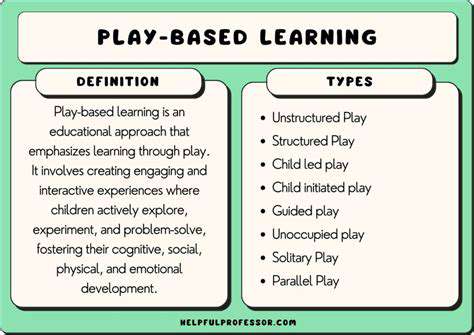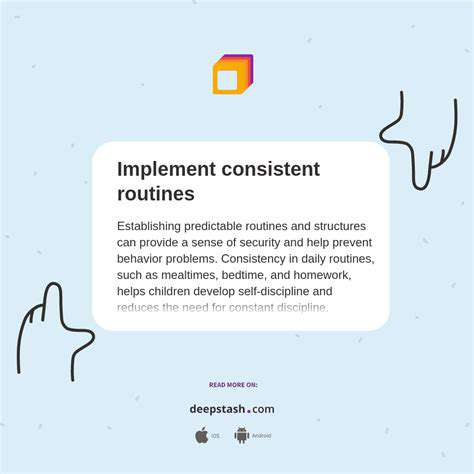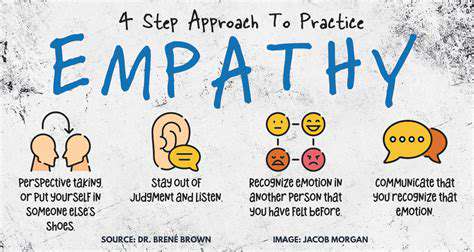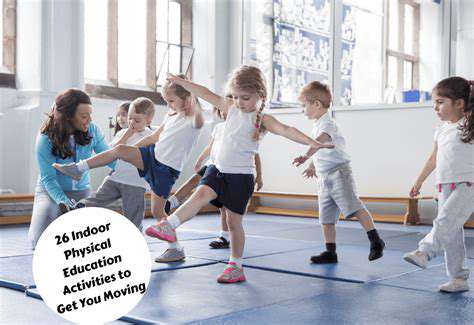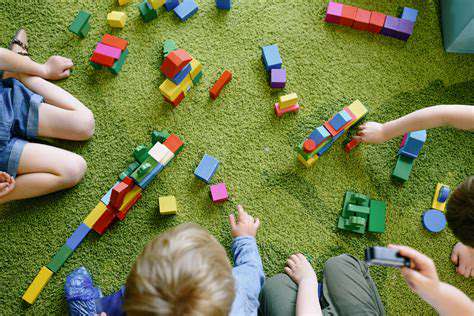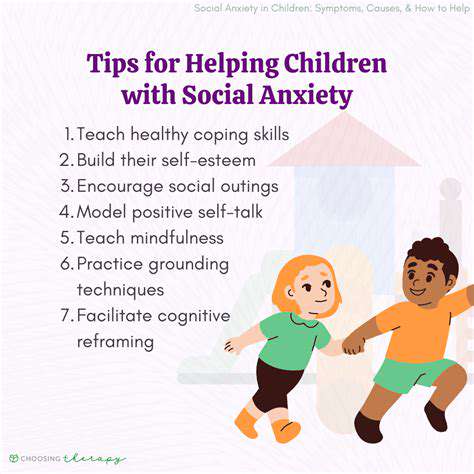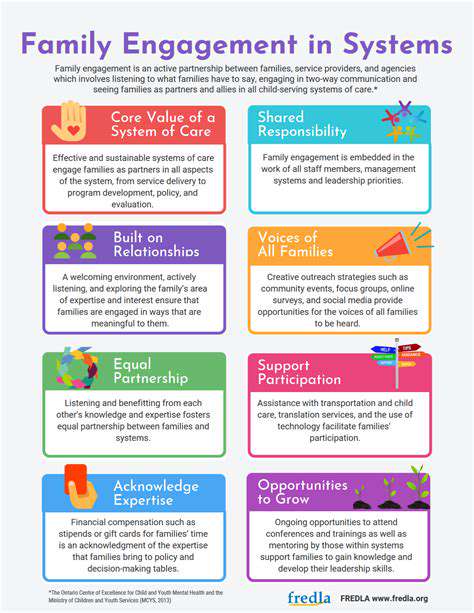Teaching Kids to Identify and Manage Big Emotions
Understanding the Basics of Emotional Expression
Emotional literacy begins with recognizing the fundamental range of human emotions. This encompasses a spectrum from the seemingly simple, like happiness and sadness, to the more complex, like anxiety, frustration, and disappointment. It's crucial to acknowledge that emotions are not just feelings; they are complex responses to internal and external stimuli, shaping our thoughts and behaviors. Developing a vocabulary to articulate these feelings is a vital first step, moving beyond labels like 'good' or 'bad' to accurately describe the nuances of our emotional experiences. This understanding is the bedrock upon which we build emotional intelligence and healthy relationships.
Recognizing emotions in others is equally important. Observing nonverbal cues like facial expressions, body language, and tone of voice can provide valuable insight into another person's emotional state. This skill, honed through observation and empathy, allows us to connect with others on a deeper level, fostering understanding and compassion. We are not always consciously aware of our own emotions or how they might be perceived by those around us, but by actively practicing observation and reflection, we can become more attuned to the subtle signals that indicate emotional states.
Developing Emotional Regulation Strategies
Once we can identify emotions, both in ourselves and others, we can begin to develop strategies for managing and regulating them. Emotional regulation is not about suppressing feelings, but rather about understanding them and responding constructively. This involves identifying triggers, understanding the physiological responses our bodies have to emotional stimuli, and learning techniques to manage stress and anxiety. Tools such as deep breathing exercises, mindfulness practices, and creative outlets can be valuable in helping us navigate challenging emotions in a healthy manner.
Identifying and understanding the root causes of emotions can significantly contribute to developing regulation strategies. Asking questions like What happened before I felt this way? or What might be contributing to this reaction? can provide valuable insights into the underlying patterns influencing our emotional experiences. Through self-reflection, we can learn how to identify specific situations that evoke certain emotions and develop strategies to mitigate their impact, fostering resilience and emotional well-being.
Learning to express emotions in healthy ways is another key component of emotional regulation. This involves finding appropriate channels for expressing frustration, anger, or sadness, avoiding harmful behaviors like lashing out or isolating ourselves, and instead employing constructive communication strategies. Identifying a safe space to express emotions, be that with trusted friends, family members, or a therapist, is also crucial in fostering emotional well-being.
Healthy coping mechanisms are crucial. Learning to engage in activities that promote relaxation and well-being, such as spending time in nature, listening to music, or pursuing hobbies, can significantly reduce the intensity of emotional responses. These activities provide an avenue for emotional processing and stress reduction. The journey towards emotional intelligence requires consistent practice and self-compassion, recognizing that regulating emotions takes time and effort. Recognizing the importance of seeking support when necessary, like talking to a trusted friend, family member, or therapist, fosters a supportive and productive environment for managing emotional responses and challenges.
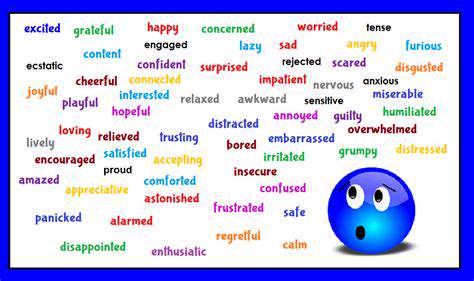
Building Resilience Through Emotional Regulation
Understanding the Foundation of Emotional Regulation
Emotional regulation is a crucial life skill that involves identifying, understanding, and managing one's emotions effectively. Children who develop strong emotional regulation skills are better equipped to handle stress, navigate challenging situations, and build healthy relationships. This foundation begins early in life and requires consistent nurturing and support from caregivers and educators.
Recognizing the various emotional states, from joy and excitement to anger and sadness, is paramount. Helping children label these feelings, even the more difficult ones, empowers them to understand their own emotional landscape and the emotions of others.
Identifying and Labeling Emotions
Teaching children to identify and label their emotions is a cornerstone of emotional regulation. This involves providing them with vocabulary to express their feelings, whether it's I feel frustrated, I'm feeling happy, or I'm feeling scared. Through consistent practice and positive reinforcement, children learn to accurately identify and name the emotions they experience.
Using visual aids like emotion charts or books with illustrations can significantly enhance this process. These tools provide concrete examples for children to connect with, enabling them to understand and articulate their feelings more effectively.
Developing Emotional Awareness
Cultivating emotional awareness extends beyond simply naming feelings; it involves understanding the *why* behind them. Encourage children to explore the thoughts and situations that contribute to their emotional responses. For example, if a child is angry, discussing the situation that led to that anger can help them process the experience and develop strategies for managing similar situations in the future.
Strategies for Managing Difficult Emotions
Equipping children with strategies to manage challenging emotions is key to building resilience. Techniques like deep breathing exercises, mindfulness activities, and physical outlets like running or playing can help them regulate their emotional responses.
Providing a safe space for expressing these emotions, without judgment, is essential. Children need to feel comfortable sharing their feelings without fear of negative consequences. This allows them to process the emotions and develop healthy coping mechanisms.
Promoting Self-Soothing Techniques
Self-soothing techniques are essential tools for children to manage their emotions independently. Teaching them to engage in activities that calm and comfort them, like listening to music, drawing, or cuddling with a favorite stuffed animal, can provide valuable emotional regulation skills that they can use throughout their lives.
These techniques empower children to independently manage their emotional responses, reducing reliance on external support and fostering a sense of self-efficacy.
Building Resilience Through Problem-Solving
Resilience is built through the ability to solve problems. Encourage children to identify the problems they're facing, brainstorm possible solutions, and evaluate the potential outcomes of each solution. This process fosters critical thinking skills, while simultaneously allowing children to develop their emotional regulation abilities through the problem-solving process.
By encouraging a proactive approach to challenges, children gain confidence in their ability to navigate difficult situations and develop a growth mindset.
The Importance of Modeling Emotional Regulation
Children learn by observing and emulating the behavior of adults around them. Parents, teachers, and caregivers play a critical role in demonstrating healthy emotional regulation strategies. By modeling how to manage difficult emotions effectively and constructively, adults provide valuable insights and support for children's emotional development.
Consistency in modeling these behaviors is key. Children are more likely to internalize and apply these skills if they see their caregivers consistently demonstrating emotional regulation in their own lives.

